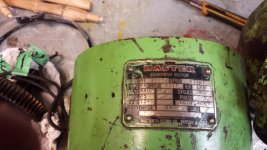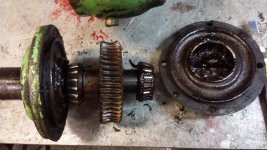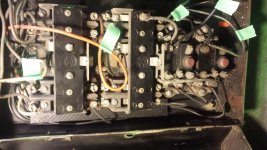katou
Aluminum
- Joined
- Oct 4, 2006
- Location
- Toronto, Ont.
I am the proud owner of a 9J. I'm trying to get the downfeed working. The downfeed motor appears to be running at about 120 RPM.
I have disassembled it, and tried it on power with no load attached. Still the same problem.
It also doesn't want to start rotating. I have to give it a little spin with a screwdriver, and then it starts rolling. If I try and spin it the other direction on start-up it will also run in the opposite direction.
I'm really hoping that it's not pooches. This motor is integrated into the drivetrain of the downfeed. It would be very hard to replace.
I don't think pictures will help much, but I'm attaching a picture or two just in case.
Edit: I've been searching the archives, and the recommendation seems to be to check the voltage, and the resistance of the motor terminals. I will check this tomorrow, but I'm a bit skeptical because the same VFD runs the other motors on the mill, and none of them show the same strange behaviour.
Thanks for any ideas,
Katou
I have disassembled it, and tried it on power with no load attached. Still the same problem.
It also doesn't want to start rotating. I have to give it a little spin with a screwdriver, and then it starts rolling. If I try and spin it the other direction on start-up it will also run in the opposite direction.
I'm really hoping that it's not pooches. This motor is integrated into the drivetrain of the downfeed. It would be very hard to replace.
I don't think pictures will help much, but I'm attaching a picture or two just in case.
Edit: I've been searching the archives, and the recommendation seems to be to check the voltage, and the resistance of the motor terminals. I will check this tomorrow, but I'm a bit skeptical because the same VFD runs the other motors on the mill, and none of them show the same strange behaviour.
Thanks for any ideas,
Katou
Attachments
Last edited:







